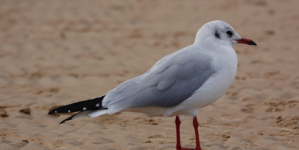-
Recreational salmon fishing is resuming this weekend in California - 26 mins ago
-
Republicans Propose ‘Natural Family Month’ To Boost Birth Rate - 29 mins ago
-
Will White Men Rush to Court After Justices’ Latest Ruling? Not Likely. - 30 mins ago
-
Walmart Lays Off Employees in Three States: What To Know - about 1 hour ago
-
State moves to suspend licenses of troubled L.A. nursing home companies - about 1 hour ago
-
Trump and Musk Trade Threats, From Broaching Impeachment to Cutting Contracts - about 1 hour ago
-
Woman Leaves Camera To Film Her Sea Dip—Seagull Steals the Show - 2 hours ago
-
Michele Kaemmerer, first transgender LAFD captain, dies at 80 - 2 hours ago
-
Medical Care for Transgender Youth: ‘The Protocol’ Podcast - 2 hours ago
-
Child Tax Credit Could Be Stripped From Millions of Children - 2 hours ago
US Announces ‘Game Changer’ Missile Upgrade to Rival China
The United States is set to equip its destroyers with the anti-ship variant of the combat-proven Tomahawk long-range cruise missile by late September to counter China’s naval buildup.
In a statement to Newsweek, Chip Whipkey, the Tomahawk deputy program manager, said the Maritime Strike Tomahawk (MST) would be ready for deployment on U.S. destroyers by the end of fiscal year 2025, which runs from October 1, 2024, to September 30, 2025.
Newsweek has contacted the Chinese Defense Ministry for comment by email.
Why It Matters
The Tomahawk cruise missile—capable of striking targets from up to 1,000 miles away—is deployed on U.S. Navy ships and submarines. According to its manufacturer, Raytheon, U.S. and allied militaries have used this precision weapon for combat more than 2,350 times.
The Chinese navy—the world’s largest by hull count—enables Beijing to expand its military reach and presence. In addition to deploying the MST, the U.S. is arming its allies and partners in the western Pacific Ocean with various anti-ship missiles.

Mass Communication Specialist 2nd Class Taylor DiMartino/U.S. Navy
What To Know
Bloomberg first reported the deployment schedule of the MST on Saturday, citing Admiral Daryl Caudle, the commander of the U.S. Fleet Forces Command. The U.S. Navy is planning to acquire up to 1,302 “game changer” Tomahawk anti-ship variants, the report said.
“MST early operational capability is planned for the end of FY25,” Whipkey confirmed to Newsweek, adding that, subject to ship testing availability, the missile would be available for deployment on nuclear-powered attack submarines in the third quarter of the next fiscal year.
There are two variants of the Tomahawk in service: the Block IV and Block V. Both are designed for land-attack operations. The Block V is a recertified and modernized Block IV missile with upgraded navigation and communication systems, according to Raytheon.
In a 2021 news release, the U.S. Navy announced that it had received the first Tomahawk missile configured to Block V, noting that future Block V capabilities would build upon the Block IV upgrade and include the MST variant, known as Block Va.
Meanwhile, Block Vb—a sister variant of Block Va—is also expected to be introduced in the future, armed with a warhead capable of striking “more diverse land targets.”
In 2015, the Tomahawk showcased its capability to hit a moving target at sea during a test near San Nicolas Island in California. The missile—a Block IV variant—was launched from a destroyer and changed course in flight after receiving position updates of the target.

U.S. Navy
What People Are Saying
The U.S. Naval Air Systems Command said on its website: “Tomahawk cruise missiles are designed to fly at extremely low altitudes at high subsonic speeds, and are piloted over an evasive route by several mission tailored guidance systems.”
Raytheon, a U.S. defense contractor, said on its website: “The Tomahawk cruise missile is a precision weapon that launches from ships, submarines, and ground launchers and can strike targets precisely from 1,000 miles away, even in heavily defended airspace.”
What Happens Next
It remains to be seen whether U.S. warships forward-deployed in the western Pacific Ocean, including those stationed in Japan, will be the first to receive the new Tomahawk missile.
Source link


















